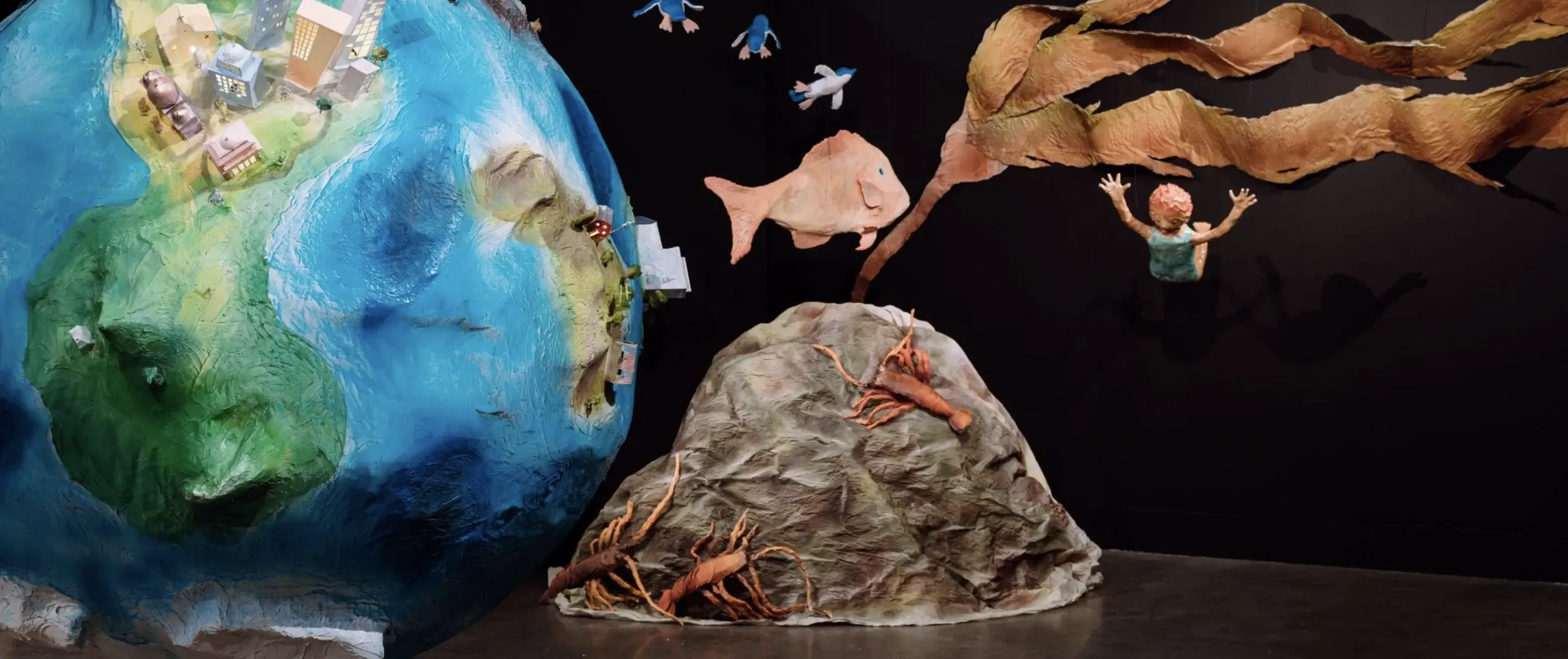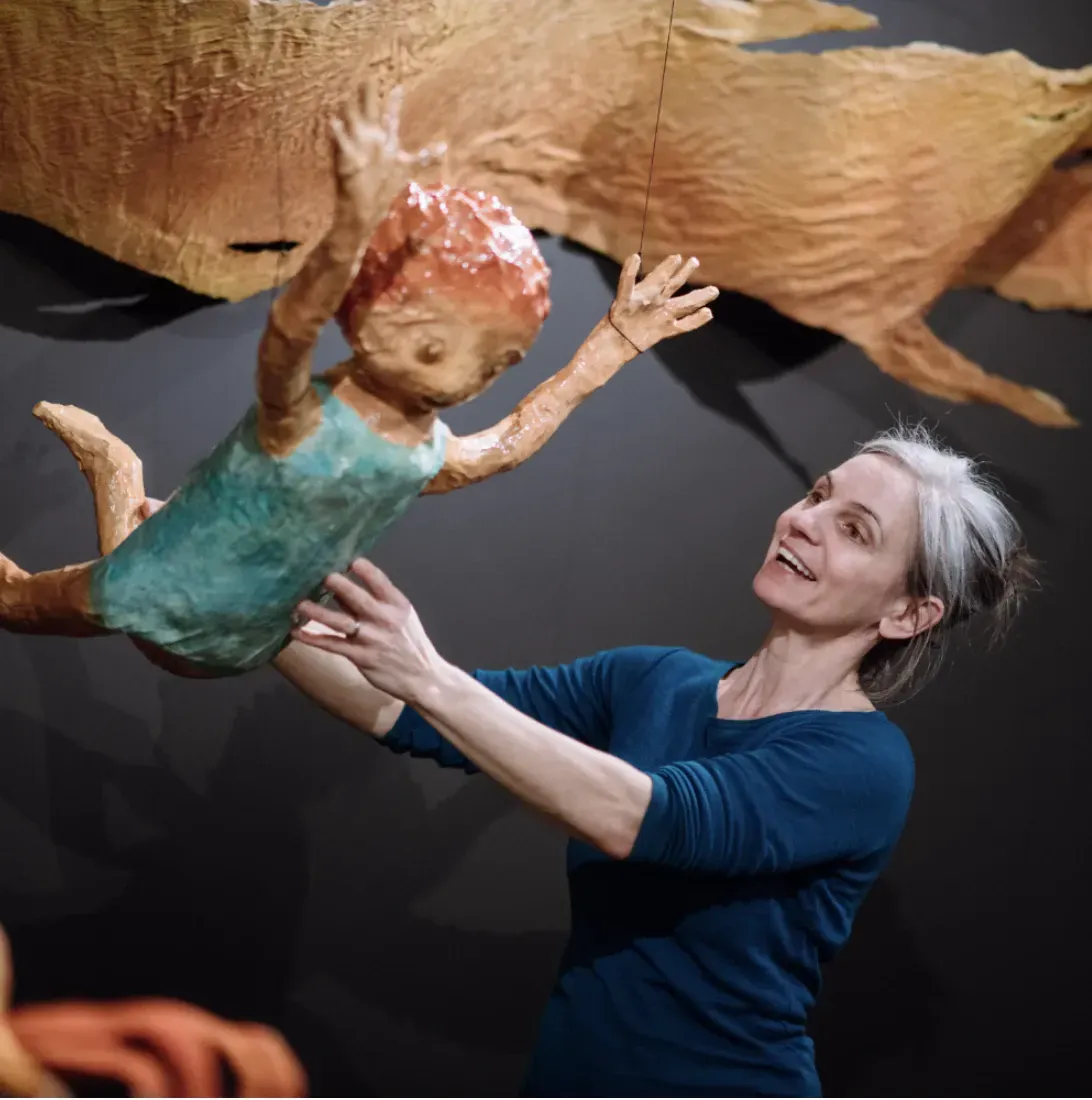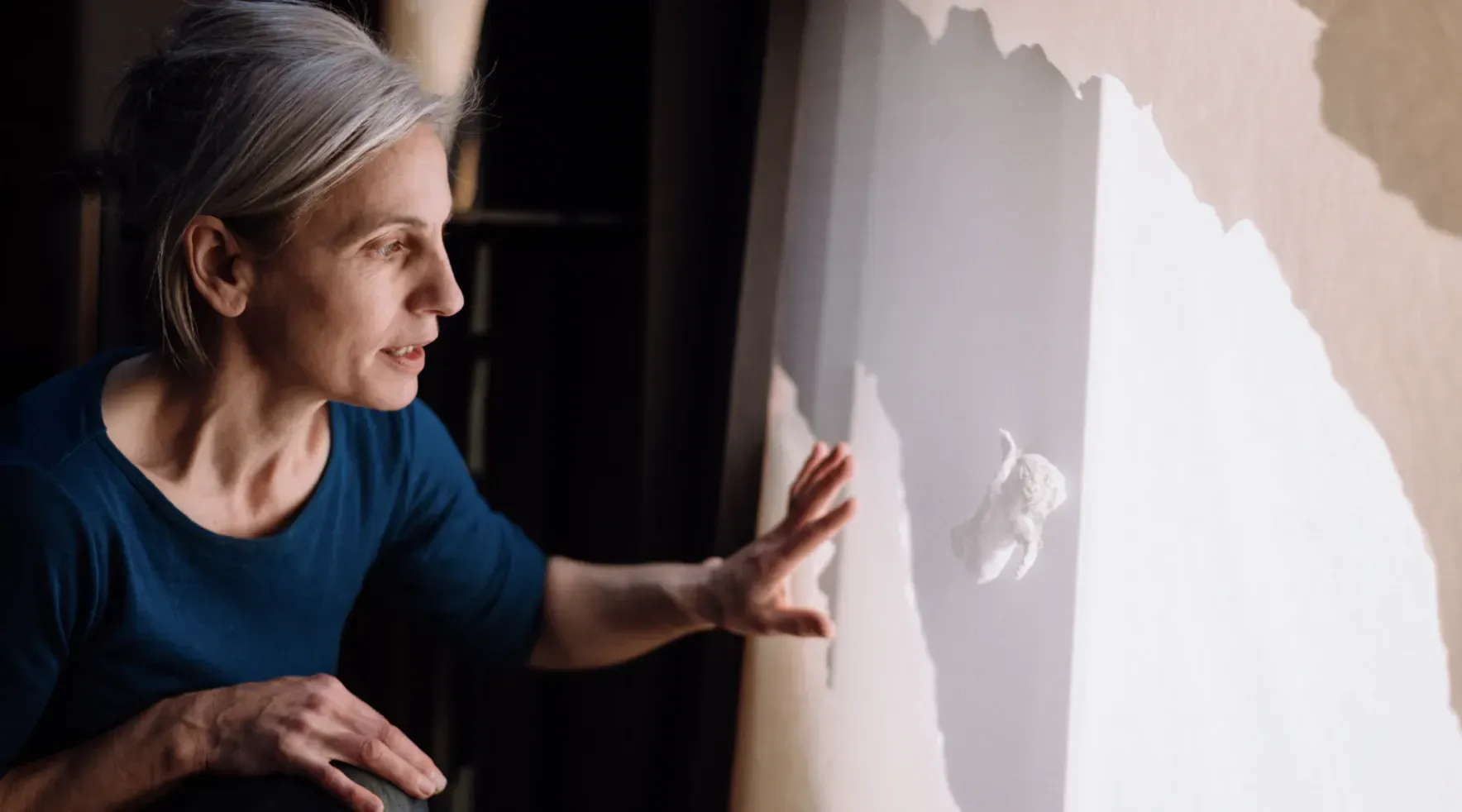What if The Earth Had a Heart?
Written by
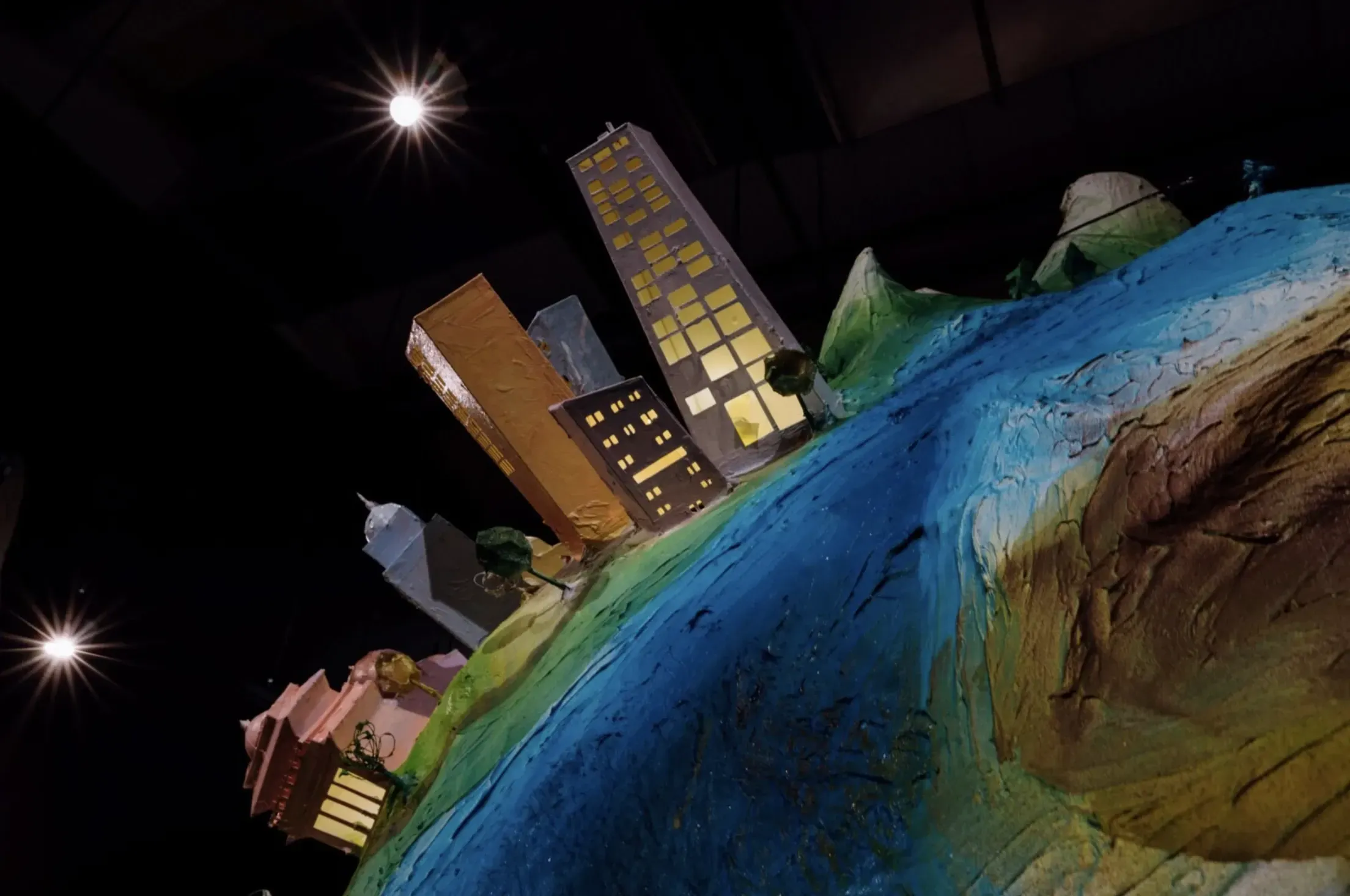
Nothing resonates quite so loudly as the fears of small children around the fate of the planet on the verge of an environmental collapse.
Visual artist and author Kate Parker found a way to harness their concerns in her current exhibition at the New Zealand Maritime Museum Hui Te Ananui a Tangaroa in Auckland until May 2022.
I Am Island and Sea gives young people a collective voice to encourage people to notice challenges in the environment and take action.
Parker saw an opportunity to utilise her professional background through storytelling and design to create the exhibition.
She was co-founder and co-director of Red Leap Theatre up until 2015. One of her most successful theatre pieces was creating Shaun Tan’s The Arrival, which won many awards and travelled internationally to Korea, Sydney, Hong Kong, Macao, Taiwan and Brisbane. She has also worked with young people on many youth productions and art projects.
I Am Island and Sea came about when she was working on a project at New Lynn School, based around the loss of life in and around the waters of the Hauraki Gulf. Of Ngāti Maniapoto, English and Greek descent, Parker says her family have watched the kina barrens (areas of bare rocky reef where kina have eaten the normally-occurring plant cover) take over and kelp disappear.
While at the school, she met a group of year five and six students who talked to her about their worries, ideas and dreams for the planet.
“They were discussing how the Takoketai (the black petrel) living on Aotea Island (Great Barrier) know where to go when they leave their nests,” says Parker. “As fledglings they fly 12000km to the waters of Ecuador and the Galapagos.”
The conversation morphed into subjects like the magnetic force of the earth and the stars.
“Then one said ‘If we weren’t destroying the earth, then maybe she would share some of her secrets’. They talked about magical creatures and the energy of the earth - and how humans might not be able to see these things because they’ve either lost their ability or they don’t realise it,” says Parker.
For young people, their ideas were profound. Key concepts revolved around kotahitanga - oneness, unity, the whole - and kaitiakitanga - preservation and conservation.
“And more than just conserving,” she says - they eyed the future considering ways to “regenerate and grow.”
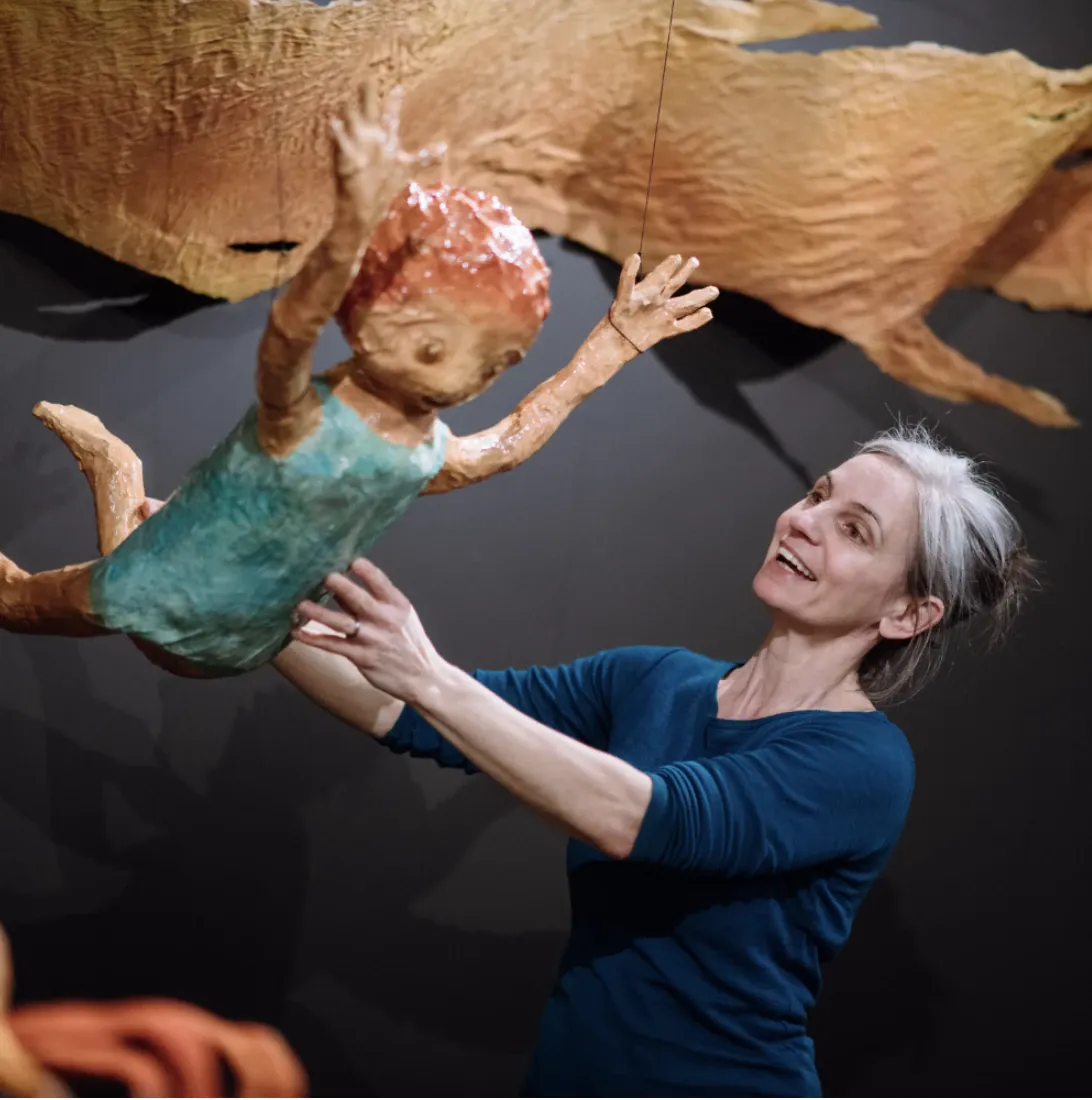
Kate Parker. Photo: Supplied.
Together, they decided to create an exhibition based around these ideas. They designed the look of the space and the journey the audience would take.
It was this miniature version of I Am Island and Sea which inspired Parker to develop a professional project that would artistically carry their voices and draw awareness of the plight of Auckland’s waters, along with the state of the entire planet.
“After all, kids are always more interesting to hear from than adults. We kind of owe it to them as we’ve not done such a great job of protecting their home or the multitude of creatures we’re currently killing.
“They’re tired of hearing about what adults are doing to nature. They want it to stop. They’ve had enough. Their ideas are simple and clear.”
But figuring out where to start and how to evolve the work was a challenge when she began applying for funding.
“How could I sustain the belief that it could be an interesting exhibition from the beginning when I didn’t even know how or where it was going to take place?
“I just had to keep the faith that it would work, as it deserved to be heard – for all those who love the Hauraki Gulf and are keen to protect it.”
Parker sought schools and youth art groups who were interested to participate and searched for a venue.
“It went from not having a venue, to running a two-week exhibition at the Silo 6 Park and then finally to finding a home at the New Zealand Maritime Museum.”
Once Parker had garnered funding - from the Auckland Regional Arts and Culture Fund, Creative New Zealand and the New Zealand Maritime Museum - she worked together with the young people, helping them to develop their ideas.
She developed her own 2D paper light boxes based around the interconnection of the forest through to the deep sea. With help from emerging artist Emily Hurley, she began developing a range of 3 dimensional fish, children and creatures from Tikapa Moana Hauraki Gulf.
Parker then brought in Sarah-Jane Blake, daughter of Sir Peter Blake, to help develop centrepieces for the exhibition - the Earth and the Future diorama, which became The Future Machine – where the audience are asked to contribute their future dreams and ideas.
“It was great to be able to bring all the work Emily and I had already created, like the clay children, fish and crayfish and spread out into the big space of the museum.
“It’s been amazing to work with Sarah-Jane and it’s kind of synchronistic that the gallery next door to us is dedicated to her amazing father. I’m grateful for her contributions and her care for the work.”
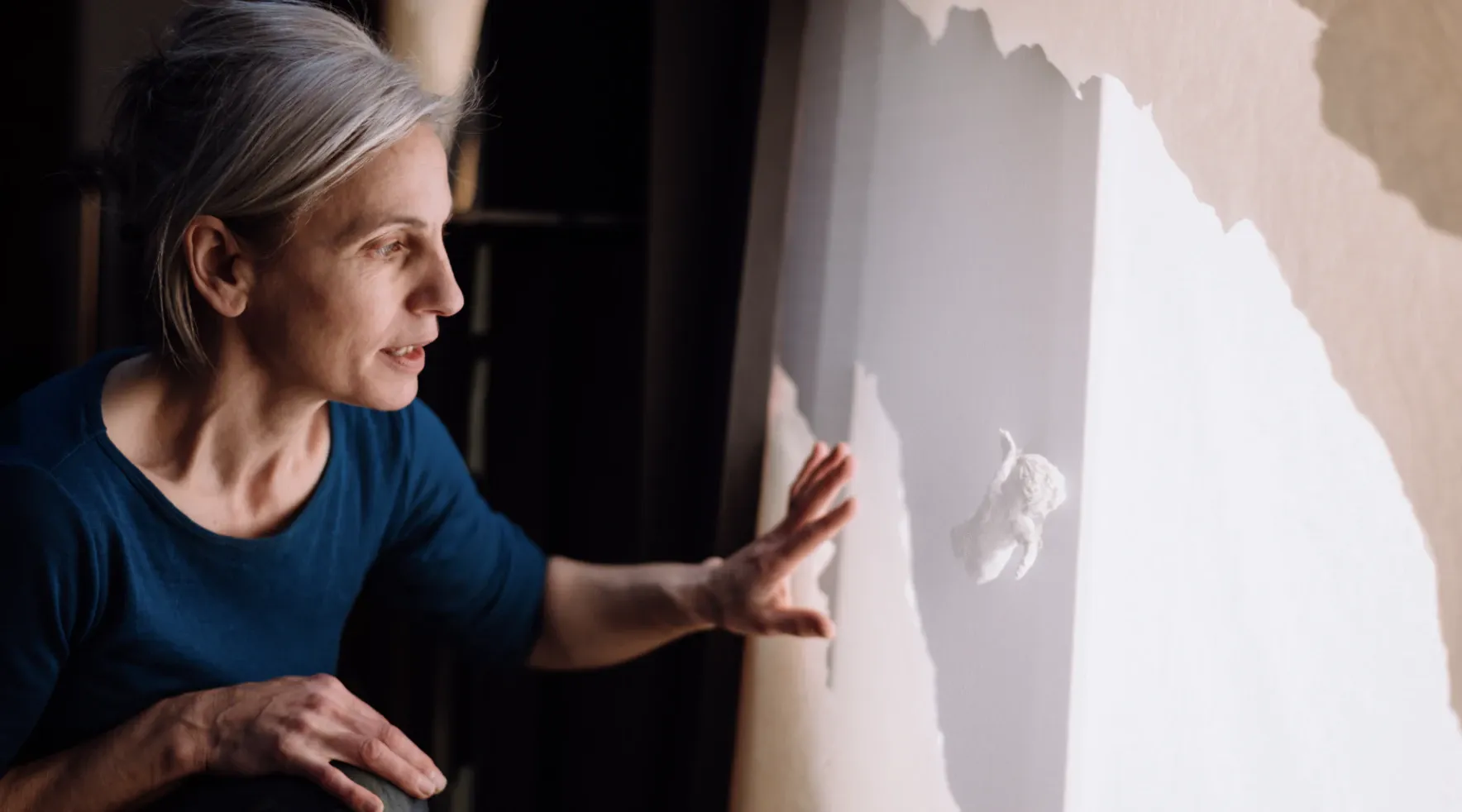
Kate Parker. Photo: Supplied.
The exhibition shows Parker’s lightbox work along with the young people’s diorama pictures housed within large boxes. Some have used clay; others print paper, card and wire. Within one, hands reach inside, grasping pieces of the earth while a tiny wire child watches with a question mark on a tiny balloon.
A large clay earth is suspended, in the centre of the exhibition, with tiny lighted buildings, animals and people. Beneath it is an opening where viewers can stand and see the heart of the earth and hear voices of school children speaking.
“This idea came from a New Lynn student speaking about the future: ‘What if in the centre of the earth there is a heart and you can talk to the earth for advice?’.
“We thought it was a great idea, so we made it. There are also light boxes with delicate scenes of the forests connected to the sea. You can sit inside a little boat and hear children speaking about the future.”
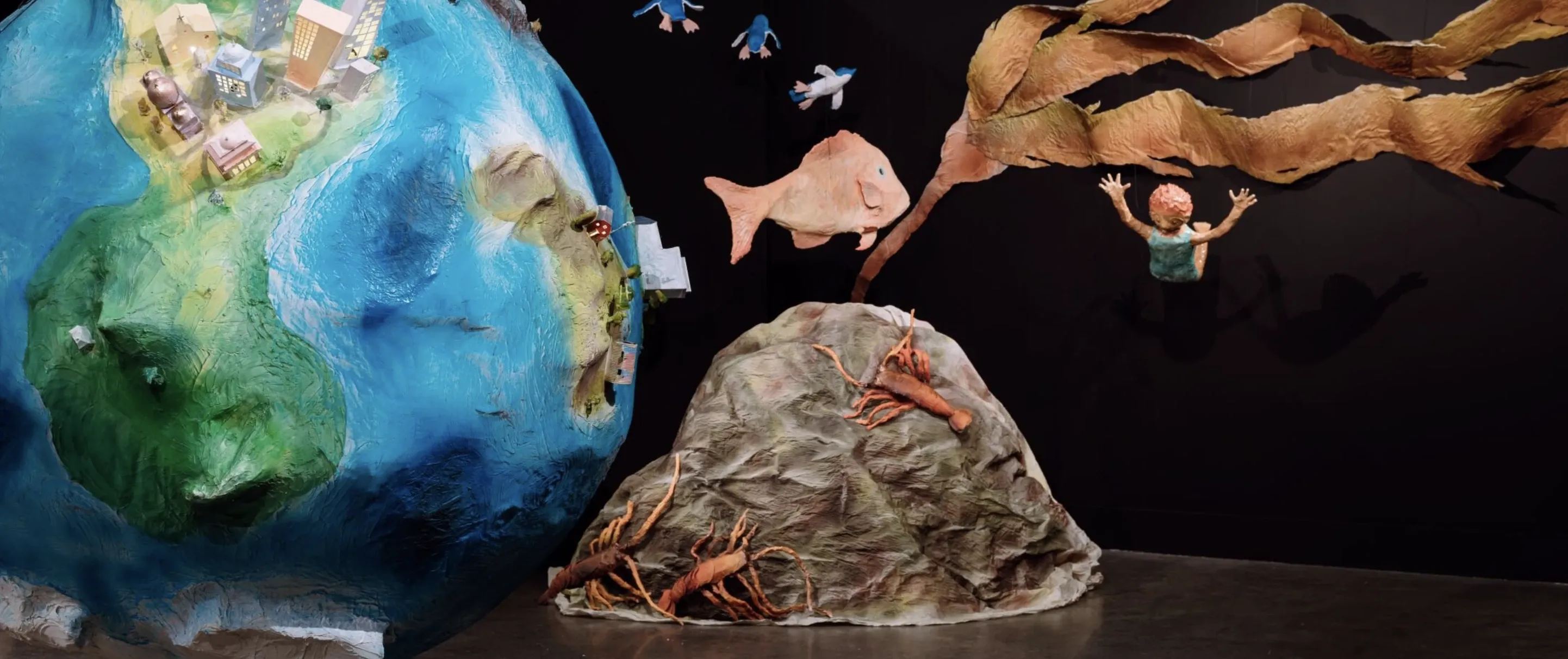
I Am Sea and Island at New Zealand Maritime Museum. Photo: Supplied.
Parker hopes the children’s voices (recorded with year five and six students at New Lynn School) and quotes on the walls of the exhibition will be heard; that their ideas and thoughts will be raised up; “that we might feel something and perhaps try harder to consume less.”
She hopes the exhibition might encourage people to do things more regeneratively to help the planet. That they will leave uplifted with an action list and some seeds to plant.
“I hope people will be inspired and uplifted to heal our mistakes.
“We can eliminate plastic, consume less wasteful products, uphold values of respect, manaakitanga and kaitiakitanga and generate mauri; generate life force through everything we do, placing Papatūānuku in the centre of everything we are.”
I Am Island and Sea is a powerful call for change.
Parker’s vision is that we start to demand product makers to be responsible for their product’s end of life; to aim for nothing going to landfill.
She wants us to question our right to take from nature what we wish, where we place nature first and care for its energy.
Because in the words of 9-year old Kavi, “nature is not just the plants and the trees, nature is the energy of the earth.”
Written in partnership with New Zealand Maritime Museum. I Am Island and Sea runs until May 2022 and is free with museum entry at Auckland’s Viaduct Harbour.
